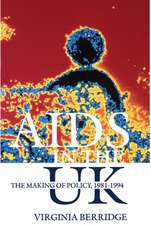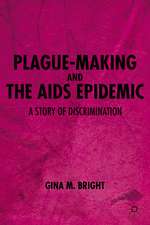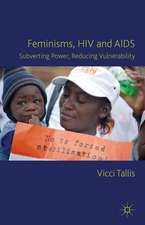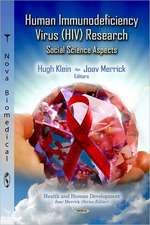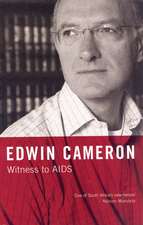Mathematical Models for Therapeutic Approaches to Control HIV Disease Transmission: Industrial and Applied Mathematics
Autor Priti Kumar Royen Limba Engleză Hardback – 15 dec 2015
The model equations, mathematical analysisand several numerical simulations that are presented in the book would serve to reveal the consequences of the logical structure of the disease transmission, quantitatively as well as qualitatively. One of the chapters introduces the optimal control approach towards the mathematical models, describing the optimal drug dosage process that is discussed with the basic deterministic models dealing with stability analysis. Another one chapter deals with the mathematical analysis for the perfect drug adherence for different drug dynamics during the treatment management. The last chapter of the book consists the stochastic approach to the disease dynamics on HIV/AIDS. This method helps to move the disease HIV/AIDS to extinction as the time to increase. This book will appeal to undergraduate and postgraduate students, as well as researchers, who are studying and working in the field of bio-mathematical modelling on infectious diseases, applied mathematics, health informatics, applied statistics and qualitative public health, etc. Social workers, who are working in the field of HIV, will also find the book useful for complements.
| Toate formatele și edițiile | Preț | Express |
|---|---|---|
| Paperback (1) | 360.73 lei 38-44 zile | |
| Springer Nature Singapore – 9 dec 2018 | 360.73 lei 38-44 zile | |
| Hardback (1) | 395.85 lei 3-5 săpt. | |
| Springer Nature Singapore – 15 dec 2015 | 395.85 lei 3-5 săpt. |
Din seria Industrial and Applied Mathematics
- 24%
 Preț: 644.10 lei
Preț: 644.10 lei - 20%
 Preț: 1000.45 lei
Preț: 1000.45 lei -
 Preț: 332.79 lei
Preț: 332.79 lei - 15%
 Preț: 647.92 lei
Preț: 647.92 lei - 15%
 Preț: 644.95 lei
Preț: 644.95 lei - 15%
 Preț: 606.14 lei
Preț: 606.14 lei - 15%
 Preț: 650.69 lei
Preț: 650.69 lei - 18%
 Preț: 895.27 lei
Preț: 895.27 lei -
 Preț: 409.51 lei
Preț: 409.51 lei -
 Preț: 369.40 lei
Preț: 369.40 lei - 18%
 Preț: 959.28 lei
Preț: 959.28 lei - 18%
 Preț: 780.82 lei
Preț: 780.82 lei - 18%
 Preț: 897.33 lei
Preț: 897.33 lei - 18%
 Preț: 885.63 lei
Preț: 885.63 lei - 18%
 Preț: 894.97 lei
Preț: 894.97 lei - 18%
 Preț: 897.81 lei
Preț: 897.81 lei - 18%
 Preț: 901.11 lei
Preț: 901.11 lei
Preț: 395.85 lei
Nou
Puncte Express: 594
Preț estimativ în valută:
75.74€ • 79.31$ • 62.83£
75.74€ • 79.31$ • 62.83£
Carte disponibilă
Livrare economică 19 martie-02 aprilie
Preluare comenzi: 021 569.72.76
Specificații
ISBN-13: 9789812878519
ISBN-10: 9812878513
Pagini: 213
Ilustrații: XIX, 213 p. 67 illus., 4 illus. in color.
Dimensiuni: 155 x 235 x 17 mm
Greutate: 0.6 kg
Ediția:1st ed. 2015
Editura: Springer Nature Singapore
Colecția Springer
Seria Industrial and Applied Mathematics
Locul publicării:Singapore, Singapore
ISBN-10: 9812878513
Pagini: 213
Ilustrații: XIX, 213 p. 67 illus., 4 illus. in color.
Dimensiuni: 155 x 235 x 17 mm
Greutate: 0.6 kg
Ediția:1st ed. 2015
Editura: Springer Nature Singapore
Colecția Springer
Seria Industrial and Applied Mathematics
Locul publicării:Singapore, Singapore
Public țintă
ResearchCuprins
Chapter 1. Introduction.- Part I: Dynamics of Immune System against HIV.- Chapter 2. Role of CTL in Restricting Virus.- Chapter 3. T Cell Proliferation.- Chapter 4. Feedback Effect towards HIV Infection.- Part II: Control based Therapeutic Approach.- Chapter 5. Insight of Delay Dynamics.- Chapter 6. Optimal Control Theory.- Chapter 7. Perfect Drug Adherence.- Chapter 8. Mathematical Model in Stochastic Approach.
Notă biografică
PRITI KUMAR ROY, PhD, is associate professor at the Department of Mathematics, Jadavpur University, Kolkata. His research interests are in epidemiological issues on the chronic infectious disease such as HIV, cutaneous leishmaniasis and filariasis. Dr. Roy also works on the neglected tropical disease like Psoriasis and has formulated robust mathematical models on the dynamics of such disease. Under his mathematical expertise, he has proven the application of mathematical experimentations to provide novel solutions to mitigate the disease. He is proficient in modelling serious issues on ecological and industrial mathematics like enzyme kinematics and biodiesel production. In his publications, he has significantly contributed to boost the production of the biodiesel from Jatropha curcas plants and also down sound ecological premises to enhance the production through ecological controls that is well-applied to agro-management. He has published a significant number of publications on control therapeutic approaches and hostpathogen interactions on infectious as well as non-infectious diseases to enlighten new insights on the subjects.
With over 75 peer reviewed research papers, Dr. Roy is a dedicated researcher in mathematical modelling and an expertise in numerical and analytical solutions to complex problems on real-life system dynamics. He has edited two books including Insight and Control of Infectious Disease in Global Scenario (by Intech Publishers). Three students obtained their doctoral degrees, three other scholars are waiting to obtain their doctoral degrees and eight Ph.D. students are perusing their research works under his esteemed guidance. Dr. Roy is a renowned reviewer for various international journals of repute. He has served several government colleges in different parts of West Bengal, India at different times. He also delivered so many invited lectures at various foreign and Indian universities and institutes. He is an eminent member of several national and international societies like Biomathematical Society of India (BMSI), International Association of Engineers (IAENG), European Society of Clinical Microbiology and Infectious Diseases (ESCMID) and European Society for Mathematical and Theoretical Biology (ESMTB). He has completed six research projects as principal investigator, sponsored by various Government of India funding agencies. Dr. Roy has received the Best Paper Award at the World Congress on Engineering 2010 held in London. He was selected as an Indian Scientist under International Collaboration/Exchange Program 2011–2012 by INSA. He was awarded with “Siksha Ratan” award in 2012.p>
With over 75 peer reviewed research papers, Dr. Roy is a dedicated researcher in mathematical modelling and an expertise in numerical and analytical solutions to complex problems on real-life system dynamics. He has edited two books including Insight and Control of Infectious Disease in Global Scenario (by Intech Publishers). Three students obtained their doctoral degrees, three other scholars are waiting to obtain their doctoral degrees and eight Ph.D. students are perusing their research works under his esteemed guidance. Dr. Roy is a renowned reviewer for various international journals of repute. He has served several government colleges in different parts of West Bengal, India at different times. He also delivered so many invited lectures at various foreign and Indian universities and institutes. He is an eminent member of several national and international societies like Biomathematical Society of India (BMSI), International Association of Engineers (IAENG), European Society of Clinical Microbiology and Infectious Diseases (ESCMID) and European Society for Mathematical and Theoretical Biology (ESMTB). He has completed six research projects as principal investigator, sponsored by various Government of India funding agencies. Dr. Roy has received the Best Paper Award at the World Congress on Engineering 2010 held in London. He was selected as an Indian Scientist under International Collaboration/Exchange Program 2011–2012 by INSA. He was awarded with “Siksha Ratan” award in 2012.p>
Textul de pe ultima copertă
The book discusses different therapeutic approaches based on different mathematical models to control the HIV/AIDS disease transmission. It uses clinical data, collected from different cited sources, to formulate the deterministic as well as stochastic mathematical models of HIV/AIDS. It provides complementary approaches, from deterministic and stochastic points of view, to optimal control strategy with perfect drug adherence and also tries to seek viewpoints of the same issue from different angles with various mathematical models to computer simulations. The book presents essential methods and techniques for students who are interested in designing epidemiological models on HIV/AIDS. It also guides research scientists, working in the periphery of mathematical modeling, and helps them to explore a hypothetical method by examining its consequences in the form of a mathematical modelling and making some scientific predictions.
The model equations, mathematical analysis and several numerical simulations that are presented in the book would serve to reveal the consequences of the logical structure of the disease transmission, quantitatively as well as qualitatively. One of the chapters introduces the optimal control approach towards the mathematical models, describing the optimal drug dosage process that is discussed with the basic deterministic models dealing with stability analysis. Another one chapter deals with the mathematical analysis for the perfect drug adherence for different drug dynamics during the treatment management. The last chapter of the book consists the stochastic approach to the disease dynamics on HIV/AIDS. This method helps to move the disease HIV/AIDS to extinction as the time to increase. This book will appeal to undergraduate and postgraduate students, as well as researchers, who are studying and working in the field of bio-mathematical modelling on infectious diseases, applied mathematics, health informatics, applied statistics and qualitative public health, etc. Social workers, who are working in the field of HIV, will also find the book useful for complements.
The model equations, mathematical analysis and several numerical simulations that are presented in the book would serve to reveal the consequences of the logical structure of the disease transmission, quantitatively as well as qualitatively. One of the chapters introduces the optimal control approach towards the mathematical models, describing the optimal drug dosage process that is discussed with the basic deterministic models dealing with stability analysis. Another one chapter deals with the mathematical analysis for the perfect drug adherence for different drug dynamics during the treatment management. The last chapter of the book consists the stochastic approach to the disease dynamics on HIV/AIDS. This method helps to move the disease HIV/AIDS to extinction as the time to increase. This book will appeal to undergraduate and postgraduate students, as well as researchers, who are studying and working in the field of bio-mathematical modelling on infectious diseases, applied mathematics, health informatics, applied statistics and qualitative public health, etc. Social workers, who are working in the field of HIV, will also find the book useful for complements.
Caracteristici
Discusses different therapeutic approaches based on several mathematical models to control the HIV disease transmission Explains different stages of HIV infection and drug dynamics with their mathematical modeling and its applications to public health policy Presents essential methods and techniques for students, interested in designing epidemiological models in HIV/AIDS, and also guides research scientists in the periphery of mathematical modeling Provides complementary approaches from deterministic/stochastic aspects to optimal control strategy with perfect drug adherence, and also tries to seek viewpoints of the same issue from different angles Helps bio-mathematicians to explore a logic of pattern formation in the disease transmission and examines its consequences in the form of a mathematical models and make some scientific predictions Includes supplementary material: sn.pub/extras


